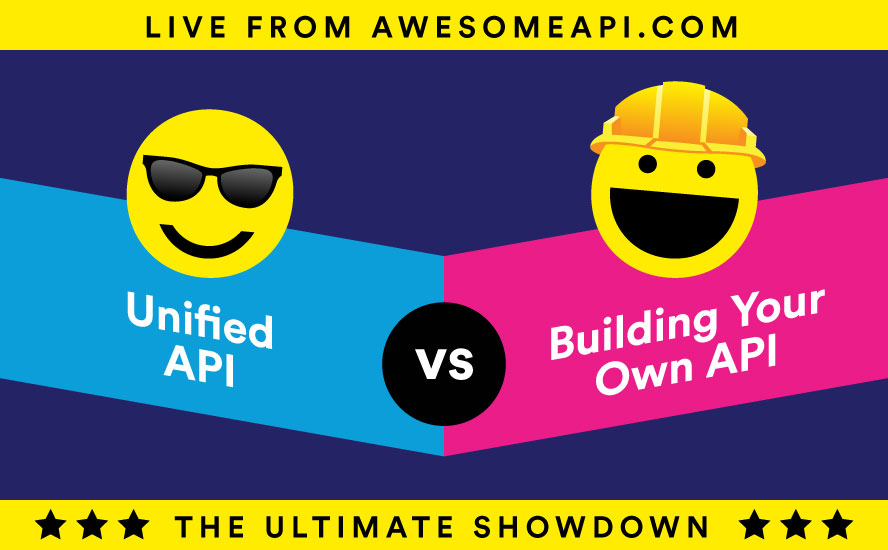
There comes a time in every software company’s life when they realize they have to integrate with other software. For some companies, it will happen sooner rather than later. Data is everywhere, everyone has their own data, and you need access to at least some of it. It seems like the only answer is building your own API integration, but you may have other options. You may be able to use a unified API like AwesomeAPI. Let’s get to the heart of the issue: unified API vs building your own API.
Round 1: Time

Will a Unified API Save You Time?
Before we get into how long it will take to get up and running with a unified API, let’s talk about building your own API integration. There are so many ways that an API integration can go wrong, but let’s assume that everything went right. Let’s also assume that you have the right team with the right level of expertise too. Even with all that going for you, you’re still looking at a month, and that’s just for one integration. What about all the other integrations you have to create in your industry.
How long does a unified API integration take? You could probably get it done on your lunch break and still have time to make yourself a sandwich. For example, the unified APIs that we are building at AwesomeAPI will be able to be onboarded entirely online through a self-guided process. The work is already done, you just have to tell our system what to connect. What’s more, our goal is to integrate across your industry vertical. Multiple integrations are no longer a problem.
Round 2: Cost

Will a Unified API Save You Money?
Depending on your resources and the integration, building one internally can cost you upwards of $15,000. Pricing will vary, but an already built unified API is going to cost you far less than that.
When you need a word processor, what does your company count on? Do you use Google Docs or Microsoft Word, or do you build a whole new solution internally? The work has already been done, save yourself time and money. Now, you may balk at the idea of monthly recurring fees, but before you do that, wait until you see how these two competitors match up in Round 5.
Round 3: Expertise

Do You Have the Expertise to Build Your Integration?
Integrations require a unique set of skills and talent. We have no doubt that you have a talented group of developers working for you, but what is their specialty? Does it have anything to do with APIs? Do they have experience working with the APIs and data sets that you need to incorporate into your workflow?
For most software companies, that answer is going to be no, or even a less-than-confident maybe. At AwesomeAPI, not only do we have the expertise, but did we mention that the work is already done? We’ll speak more to our expertise in Round 5. The suspense must be killing you at this point.
Round 4: Customization

Will Your API Integration Need to be Custom?
Perhaps your business is unique, and you have concerns about how data moves from one place to another. You want to have customization options from the start. This is a perfectly good reason to build your own API integration, but even to this, we have a counterpoint.
Did you know that unified APIs like AwesomeAPI have built-in features that allow for customization? Not only that, but the features are made to be easy to use. No need to go in and change hard code or navigate a system that was never designed to be user-friendly in the first place.
Round 5: Maintenance

You Built Your Own API Integration, Now What?
Guess what, it’s not time to party. API integrations are perhaps the most tenuous piece of software anyone can build. It’s a bridge between two or more pieces of software, but that software is changing and evolving, and they rarely care what integrations will break in the process. So it’s more like a bridge built between two boats with independent captains that don’t talk to each other.
You will have to maintain your API integration. This ties back into your expertise, your costs, and everything else. Do you really want to take people off a job next month because the integration you thought was built needs to be reworked? The unified API model solves this because we have people dedicated to actively monitoring, repairing, and even improving our integrations.
Unified APIs Win 5 Rounds Out of 5!
Read More: Awesome API Building in Public